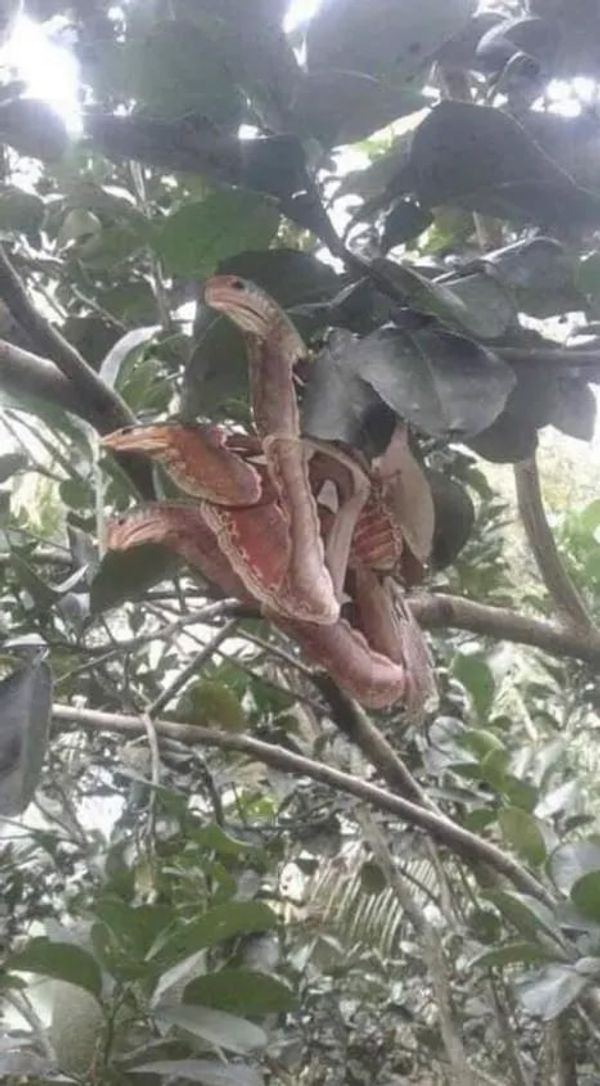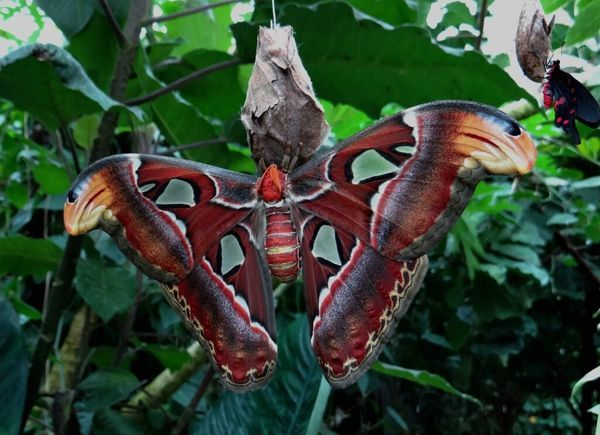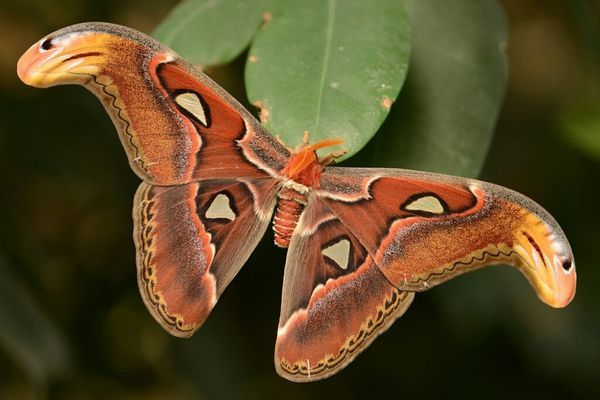
Nature is a constant source of fascination and wonder, especially when it comes to the incredible adaptations and survival techniques of different species. Recently, I came across some captivating images that appeared to show three angry snakes hiding in a tree. But as I dug deeper, I discovered that there was more to this story than meets the eye.
The phenomenon of biodiversity, where countless species coexist in harmony, is truly amazing. Each species plays a unique role in maintaining the delicate balance of its ecosystem. But what’s even more astonishing are the adaptations that animals and plants have developed over time to survive in their environments. Some have evolved camouflage colors to blend seamlessly into their surroundings, while others have developed toxic compounds for self-defense.
In 2021, a photo shared on Twitter caused quite a stir. The picture seemed to show three fierce-looking serpents camouflaged in a tree. However, upon closer inspection, it became clear that these creatures were not snakes at all. They were, in fact, parts of the wings from two different species of the Atlas moth, creating a remarkable optical illusion. These incredible insects, found in Asian forests, have the astonishing ability to mimic the appearance of snakes. With a wingspan that can reach up to 24 cm (9.4 in) and a wing surface area of over 160 cm² (25 in²), the Atlas moth is one of the largest species of Lepidoptera.

The Atlas moth gets its name from the Greek mythological figure Titan Atlas. Despite its large wingspan, the body of the Atlas moth is relatively small, making it one of the largest insects on Earth. During its adult stage, which lasts only two weeks, its primary objective is to lay eggs and protect them. This is where its snake-like camouflage comes into play.
According to Rob, the Twitter user who shared the trending image, “Attacus Atlas is among the largest butterflies worldwide, and during its adult stage, it lives only for a brief span of two weeks. Its primary objective during this stage is to lay eggs and safeguard them until they hatch, all the while camouflaging itself as a snake.”
Many social media users were initially fooled by the moth’s disguise, finding it hard to believe that it was not a snake. But the Atlas moth has developed a unique defense strategy for protection. Despite not being strong flyers, they drop to the ground, squirm, and flap their wings to resemble a snake’s head when they sense danger. It’s truly a sight to behold!

Encountering an Atlas moth in person is a rare experience that often requires a trip to the tropical forests of Asia. However, there have been reported sightings of these magnificent creatures in other parts of the world, including Europe and the United States. In 2012, a family in Ramsbottom, Greater Manchester, found an Atlas moth on their windowsill, initially mistaking it for a bat due to its immense size. Sadly, the moth passed away shortly after its discovery.
In July 2022, the first known sighting of an Atlas moth in the United States took place in Bellevue, Washington. Another sighting occurred in Sweden during the same year. Sven Spichiger, the managing entomologist for the state Agriculture Department, described the Atlas moth as a “gee-whiz” type of insect due to its impressive size. He added, “Even if you aren’t on the lookout for insects, this is the type that people get their phones out and take a picture of – they are that striking.”

Encountering a creature as magnificent as the Atlas moth is a true privilege and something to be celebrated. Sharing our knowledge and spreading the word about this extraordinary moth on platforms like Facebook can help more people appreciate its uniqueness and the rarity of its occurrence outside its natural habitat. Nature never ceases to amaze us, and it is our responsibility to appreciate and protect these wonders for future generations.





